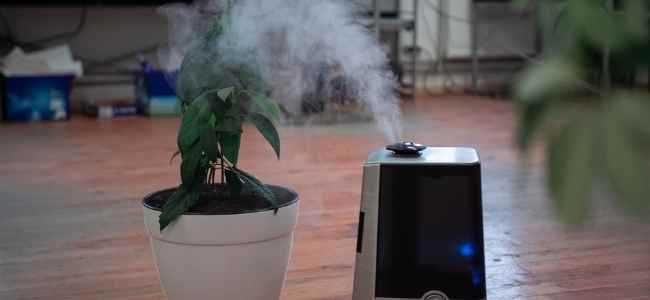
There many plants and herbs that can contain therapeutic and medicinal properties. Those plants and herbs can be rendered to produce drops of their essence, which is called essential oil. For centuries, these extracts have been used to bring about necessary or preferred physical, mental, or emotional health for people. They are often a first-step option when addressing a mood or minor health concern. Once it is determined which essence is indicated for a particular goal, it becomes a question of how best to capture the benefits based on which method of application or dispersal method for the oil.
Diffusers
An essential oil diffuser is a device that can hold the essential oil in a small vat with water and steadily disperse the aroma in a fine mist over time. This is a very subtle way to infuse the aroma throughout a small area. This method works great for dispersing an oil in a room. Diffusers are great to combine oils to create a comprehensive recipe for a health objective. Diffusers can operate for hours at a time and are unique to the particular diffuser.
Diffusers can come in a variety of dispersal methods. The most commonly used diffusers are electronic and are used with a power cord or batteries to create a mist from the water and essential oil. Will the intended location of the diffuser have access to an electrical outlet?
If you have a large space, such as an open floor plan home or a business, there are diffusers available that can spread a scent throughout the environment more effectively. Beyond an enclosed room, the area will need a large space diffuser. Some models can be connected to the HVAC system, allowing the space to be filled with aromatic nanoparticles for optimum benefit.
The two main types of small area diffusers are ultrasonic and nebulizing. Each has its advantages and disadvantages. It’s important to know the difference if you plan to incorporate essential oils into the environment with a diffuser presented in the best possible way without losing the essence.
Nebulizing diffusers are often preferred as the most effective type of diffuser. The nebulizing diffuser will not dilute the essential oil with water vapor as an ultrasonic diffuser will. But the nebulizer will cost more because of its purer presentation. While the ultrasonic diffuser is more budget friendly, it is understood that a portion of the essential oil will be diluted through the water base. The ultrasonic methods will also offer the benefit of humidifying the area.
Heat diffusers use a burning candle to apply heat to evaporate the essential oils into the air. Be sure to investigate the particular oil being used with a heat diffuser as some oils can be altered by heat and may result in lost benefits. Using an open flame as the heat source comes with its own risks, so be sure that the heat diffuser is never left unattended.
Topical Application
Direct application is one of the most popular ways to take advantage of the essential oil’s benefits. It’s important to note that it is never advised to apply an essential oil directly to the skin before mixing it with a carrier oil. A carrier oil, such as almond oil or coconut oil, is combined with the essential oil, which the user can apply to the skin. By doing so, the oil will absorb into the body through the skin.
Most essential oil recipes for topical application are written to mix up enough for more than one application at a time. The remaining essential oil and carrier oil is kept in a small, rollerball bottle. This will allow the user to apply as needed until the mixture is used up. Popular places to apply essential oils include the wrist, temple, foot, neck, or behind the ears. Think about areas where the pulse can be easily detected, as they will be excellent spots for applying the mixture.
Inhalation
Inhalation can be a highly beneficial option since it doesn’t require a recipe or carrier oil. The benefits can be used immediately. With this type of use, hold the opened bottle up to the nose and inhale. For ongoing benefit, the oil can be dropped onto a cotton ball or dabbed inside a facemask for breathing in the oil’s properties over a period of time.
Many jewelry makers offer bracelets or necklaces with porous stone-like material, typically lava stone, that the wearer can drop the oil onto to hold the scent. As the jewelry is worn, the wearer will get wafts of the essential oil and passively inhale the healing qualities.
Many other items are available with surfaces specifically designed to hold a droplet of essential oils to house the aroma so it can be breathed in. Even a cotton ball can serve as an inhalation method to hold an essential oil droplet. It can be placed in a location where the user could inhale its properties on occasion. A favorite item with an added aroma can be placed in a vehicle to enhance that vehicle’s odor.
Add to A Bath
Another excellent option for adding essential oils into a health regime is to add a few drops to bathwater. If the oil is dropped directly into the water, it’s going to mix like oil and water, which is to say not well at all. For adding essential oils to bath water, add the drops first to Epsom salts. Once scented, the salts can be added to the bath. The salts will dissolve in the water and infuse the bath with oils.
Essential oils are precious. They are often not cheap, and their benefits are endless. Respect the oils by using them conscientiously. Consider the best method of using and applying the oils to accomplish the health objective. Enjoy their healing benefits by finding which method creates the best results. Everybody is different, and the results of a particular essential oil can be affected by its choice application. Enjoy finding the best use for each individualized health goals.











